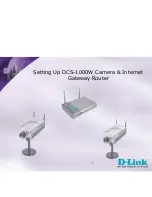
P.RG F4202N
© (2010) Pirelli Broadband Solutions S.p.A. All Rights Reserved. Proprietary Use Pursuant to Cover Page Instructions.
QoS Section
HBK 939800036-A1
75
This screen is divided into two main sections, 'Matching' and 'Operation', which
are for defining the operation to be executed when matching conditions apply.
-
Matching:
Use this section to define the rule's conditions, which are the LAN
computer's parameters to be matched.
-
Operation:
Set rule priority with Quality of Service.
3.
Click 'OK' to save the settings.
TRAFFIC SHAPING
Traffic Shaping is the solution for managing and avoiding congestion where a
high speed LAN meets limited broadband bandwidth. A user may have, for ex-
ample, a 100 Mbps Ethernet LAN with a 100 Mbps WAN interface router. The
router may communicate with the ISP using a modem with a bandwidth of
2Mbps. This typical configuration makes the modem, having no QoS module,
the bottleneck. The router sends traffic as fast as it is received, while its well-
designed QoS algorithms are left unused. Traffic shaping limits the bandwidth of
the router, artificially forcing the router to be the bottleneck.
A traffic shaper is essentially a regulated queue that accepts uneven and/or
bursty flows of packets and transmits them in a steady, predictable stream so
that the network is not overwhelmed with traffic.
While Traffic Priority allows basic prioritization of packets, Traffic Shaping pro-
vides more sophisticated definitions. Such are:
Bandwidth limit for each device
Bandwidth limit for classes of rules
Prioritization policy
TCP serialization on a device
Additionally, you can define QoS traffic shaping rules for a default device.
These rules will be used on a device that has no definitions of its own. This en-
ables the definition of QoS rules on Default WAN, for example, and their main-
tenance even if the PPP or bridge device over the WAN is removed.
















































